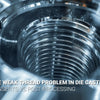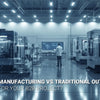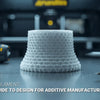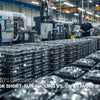How Does Type III Hard Anodizing with Bead Blasting Cut Manufacturing Costs by 40%?
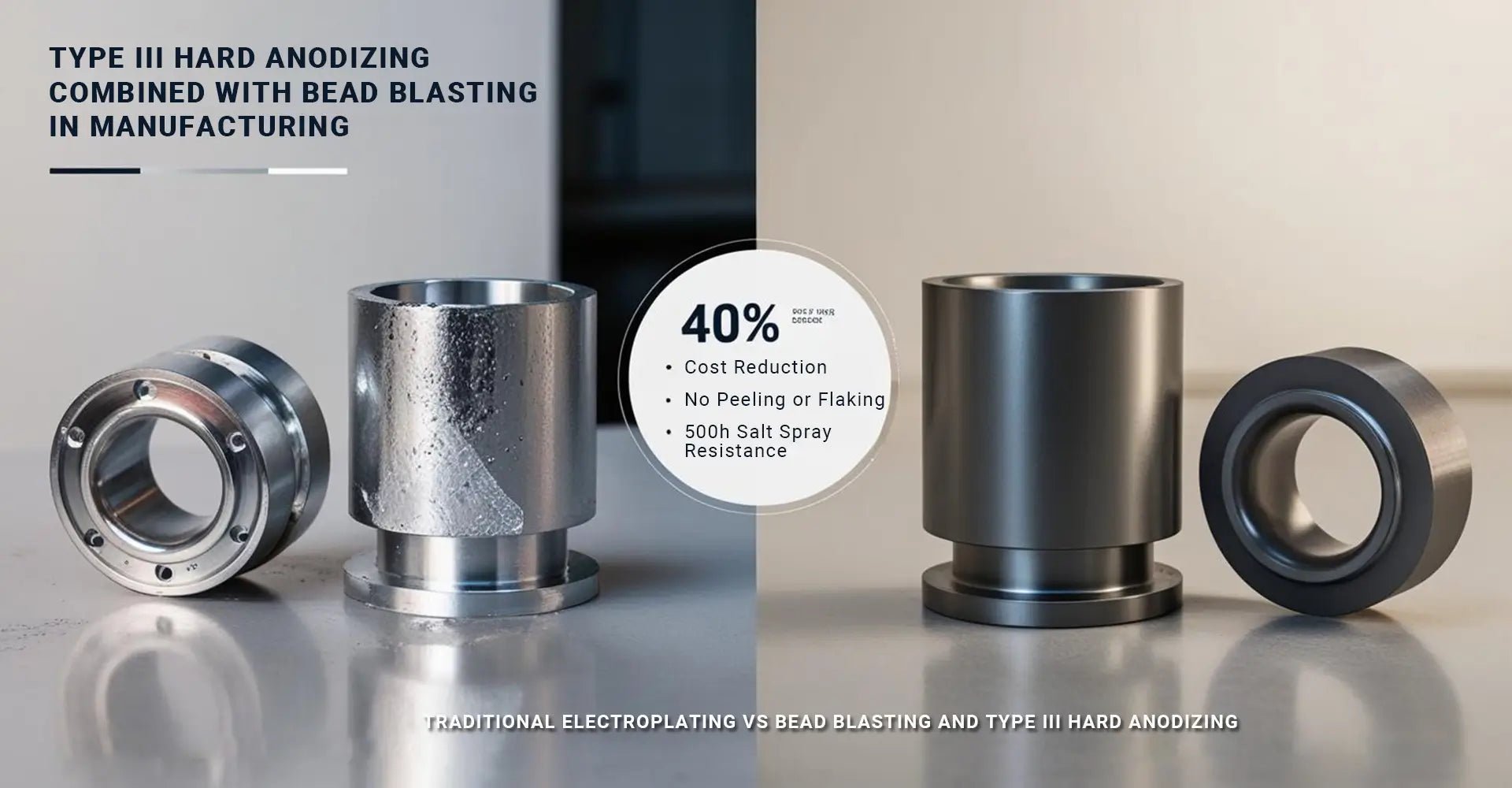
How Does Type III Hard Anodizing with Bead Blasting Cut Manufacturing Costs by 40%?

In today's competitive manufacturing landscape, companies constantly search for ways to balance exceptional surface quality with reasonable production costs. Surface finishing represents a significant portion of total manufacturing expenses, often becoming a bottleneck in production efficiency and profitability. However, innovative combinations of established techniques are changing this equation dramatically.
Type III hard anodizing + bead blasting emerges as a powerful duo that delivers superior protection and aesthetics while reducing costs by up to 40% compared to conventional electroplating methods. This approach not only enhances product durability but also creates visually appealing surfaces that meet stringent industry standards, making it a game-changer for manufacturers across multiple sectors.
Surface finishing decisions impact far more than just appearance. They determine how products resist daily wear, withstand environmental challenges, and maintain their visual appeal over time. As markets become increasingly competitive, manufacturers who master the balance between quality finishing and cost efficiency gain a significant advantage. Let's explore how this specific combination of technologies delivers exceptional results while dramatically reducing expenses.
Table of Contents
- What Makes Anti-Fingerprint and Corrosion Resistance Critical for Modern Products?
- How Does Type III Anodizing Compare to Traditional Electroplating?
- What Techniques Create Perfect Matte Finishes Through Bead Blasting?
- How Do These Finishes Perform in Demanding Environmental Tests?
- What Real Results Have Manufacturers Achieved?
- Which Questions Do Manufacturers Most Frequently Ask?
What Makes Anti-Fingerprint and Corrosion Resistance Critical for Modern Products?
Today's consumers expect products that maintain their pristine appearance despite regular handling and environmental exposure. This expectation has pushed manufacturers to seek out anti-fingerprint and corrosion-resistant coatings that can withstand countless touches without showing smudges while also protecting against oxidation and degradation. These dual concerns are particularly crucial for kitchen appliances, smart devices, and outdoor electronics where both aesthetic appeal and functional durability directly impact customer satisfaction.
Fingerprints and corrosion both significantly diminish perceived product quality. Fingerprint-resistant surfaces maintain a clean appearance with minimal maintenance, while corrosion protection ensures longevity even in challenging environments. Without proper surface treatments, manufacturers face increased warranty claims, damaged brand reputation, and reduced product lifespan – all directly impacting the bottom line.
The challenge intensifies with certain materials and applications. For example, aluminum components machined through CNC processes require specific surface treatments to maximize their potential. High-touch areas like handles, control panels, and housing exteriors particularly benefit from specialized finishes. Additionally, products destined for humid environments, coastal regions, or outdoor installation demand exceptional protection against the elements. Consequently, manufacturers increasingly seek low-cost surface finishing solutions that address both aesthetic and environmental durability requirements without excessive production costs.
How Does Type III Anodizing Compare to Traditional Electroplating?
When examining finishing costs, the difference between Type III anodizing and conventional electroplating becomes immediately apparent. At approximately $15/m² compared to electroplating's $35/m², the initial cost advantage of Type III anodizing is clear. However, the benefits extend far beyond this price difference. Type III anodizing also delivers significantly better performance metrics, particularly in durability testing where it demonstrates up to 500 hours of salt spray resistance versus electroplating's typical 200 hours.
Aluminum anodizing, particularly Type III (hard anodizing), creates a substantially thicker oxide layer than standard anodizing or electroplating processes. This increased thickness translates directly to enhanced wear resistance, superior hardness, and exceptional corrosion protection. Furthermore, because the anodic layer becomes an integral part of the base material rather than a separate applied coating, it won't chip, flake, or peel under mechanical stress – a common failure point for electroplated finishes.
Type III anodizing represents a cost-effective alternative to electroplating with numerous technical advantages. The process achieves MIL-A-8625 Type III compliance, a rigorous military specification that verifies exceptional performance standards. Unlike electroplating, which often involves hazardous chemicals and generates significant waste, anodizing produces fewer environmental concerns and typically requires less elaborate facility investments. Additionally, the anodizing process allows for precise color control through dye absorption within the porous oxide structure, offering aesthetic versatility without compromising protection. When manufacturers consider both immediate cost savings and long-term durability benefits, Type III anodizing clearly outperforms traditional electroplating across multiple assessment metrics.
What Techniques Create Perfect Matte Finishes Through Bead Blasting?
The growing consumer preference for sophisticated matte finishes has manufacturers searching for reliable, repeatable methods to achieve these aesthetics. Bead blasting has emerged as the preferred technique for creating uniform matte surfaces with precisely controlled texture. By propelling tiny glass beads against component surfaces, this process creates an even, non-reflective finish that not only looks premium but also helps hide minor surface imperfections and subsequent handling marks.
Achieving optimal results requires precise control of multiple parameters. The most consistent matte finishes typically employ 80-100 mesh glass beads propelled at 0.4MPa pressure with a 30° nozzle angle relative to the surface. This specific combination produces the desired Ra 1.6μm surface roughness that balances tactile quality with light diffusion properties. Maintaining strict control over these variables ensures batch-to-batch consistency, a critical factor for manufacturers producing consumer-facing products.
Abrasive blasting for matte finishes represents a highly technical process where numerous variables influence the final result. The distance between nozzle and workpiece, blast duration, material hardness, and even ambient humidity can affect finish characteristics. Using automated systems with precise motion control creates the consistency necessary for high-volume production. Importantly, surface finish quality directly influences subsequent anodizing results – properly blasted surfaces accept anodic coatings more uniformly and develop better color consistency than improperly prepared surfaces. This technical interconnection between processes highlights why manufacturers should consider the entire finishing workflow rather than viewing each step in isolation.
How Do These Finishes Perform in Demanding Environmental Tests?
Environmental testing provides objective verification of surface treatment performance, with salt spray resistance being particularly crucial for products exposed to harsh conditions. The ASTM B117 testing protocol subjects treated components to a continuous salt spray environment that accelerates corrosion processes. Components finished with the Type III anodizing and bead blasting combination demonstrate exceptional performance, with salt spray test 48 hours anodized parts showing zero visible corrosion – a remarkable achievement that validates their suitability for demanding applications.
This performance exceeds requirements for most consumer and light industrial applications, making these finishes appropriate for smart home devices, outdoor electronics housings, marine equipment components, and automotive trim parts. The excellent results stem from the combination of the hard, thick oxide layer created during Type III anodizing and the uniform surface provided by proper bead blasting, which eliminates microscopic valleys that might trap corrosive substances.
Beyond salt spray resistance, these finishes also demonstrate excellent performance in other environmental challenges. UV exposure tests show minimal color fading compared to painted or powder-coated alternatives. Thermal cycling tests verify coating adhesion even through repeated expansion and contraction. Abrasion testing confirms the hard anodic layer's superior wear resistance compared to conventional surface treatments. This comprehensive performance profile explains why manufacturers increasingly specify Type III anodizing with bead blasting for components destined for challenging environments – the combination delivers reliable protection across multiple environmental stressors while maintaining aesthetic appeal throughout the product lifecycle.
What Real Results Have Manufacturers Achieved?
A prominent coffee machine manufacturer's experience illustrates the real-world impact of switching to Type III anodizing with bead blasting. Previously, this company relied on nickel electroplating for their machine housings, facing both cost pressures and increasing environmental compliance challenges. The transition to an anodizing-based process represented a significant manufacturing change that required careful evaluation and validation.
The results were compelling – the manufacturer achieved a 40% cost reduction in post-processing across their production runs. This translated to approximately $4.50 savings per unit across 10,000-unit batches, representing significant annual savings. Beyond cost benefits, the new process also improved production throughput by reducing finishing-related bottlenecks and decreased rejection rates due to finish imperfections.
The coffee machine case study demonstrates several important factors beyond simple cost savings. First, the anodized surface demonstrated better handling of thermal cycles from brewing operations compared to electroplated alternatives. Second, the matte finish created by bead blasting before anodizing effectively masked minor machining marks that previously required additional processing to eliminate. Third, the anodized surface performed better in accelerated lifecycle testing, suggesting improved long-term durability in consumer homes. Finally, the manufacturing process generated fewer environmental concerns, aligning with the company's sustainability initiatives. This multifaceted improvement showcases why manufacturers across industries are evaluating similar process changes.
Conclusion
The powerful combination of Type III hard anodizing with bead blasting delivers exceptional surface protection and aesthetic appeal while dramatically reducing manufacturing costs. This approach not only addresses immediate production expenses but also enhances product quality, durability, and market appeal. For manufacturers seeking both immediate savings and long-term competitive advantages, this surface finishing strategy offers compelling benefits.
Manufacturers considering a transition to Type III anodizing with bead blasting should begin with small batch testing to validate performance for their specific applications. Partnering with experienced finishing providers who understand both processes ensures optimal results. When properly implemented, this combination can transform surface finishing from a cost center into a strategic advantage through enhanced quality, reduced expenses, and improved production flow. With 40% cost savings and superior performance metrics, the business case for evaluation is clear and compelling.
External Resources
[Salt spray test 48 hours anodized parts][^1]
[Cost-effective alternative to electroplating][^2]
[MIL-A-8625 Type III compliance][^3]
[Abrasive blasting for matte finishes][^4]
---
[^1]: Understanding the salt spray test can help you assess the durability and corrosion resistance of anodized parts, ensuring quality in manufacturing.
[^2]: Exploring alternatives to electroplating can save costs while maintaining quality, making it essential for budget-conscious projects.
[^3]: Learning about MIL-A-8625 Type III compliance is crucial for ensuring that anodized products meet military specifications and standards.
[^4]: Explore this link to understand how abrasive blasting can enhance matte finishes and improve your production process.
-
Posted in
surface finish







